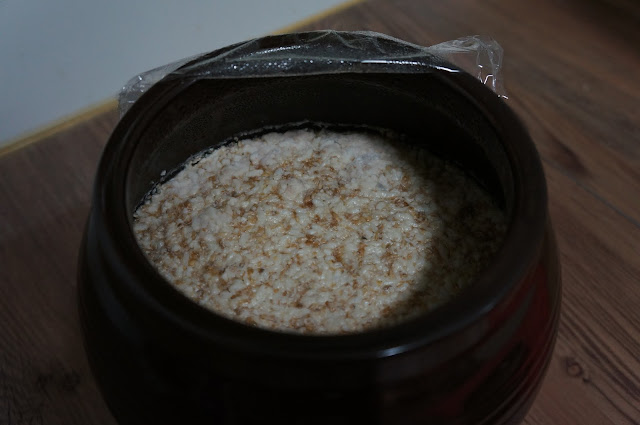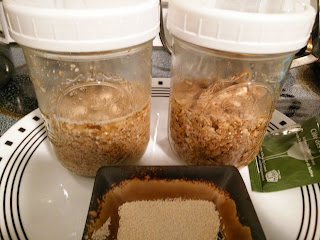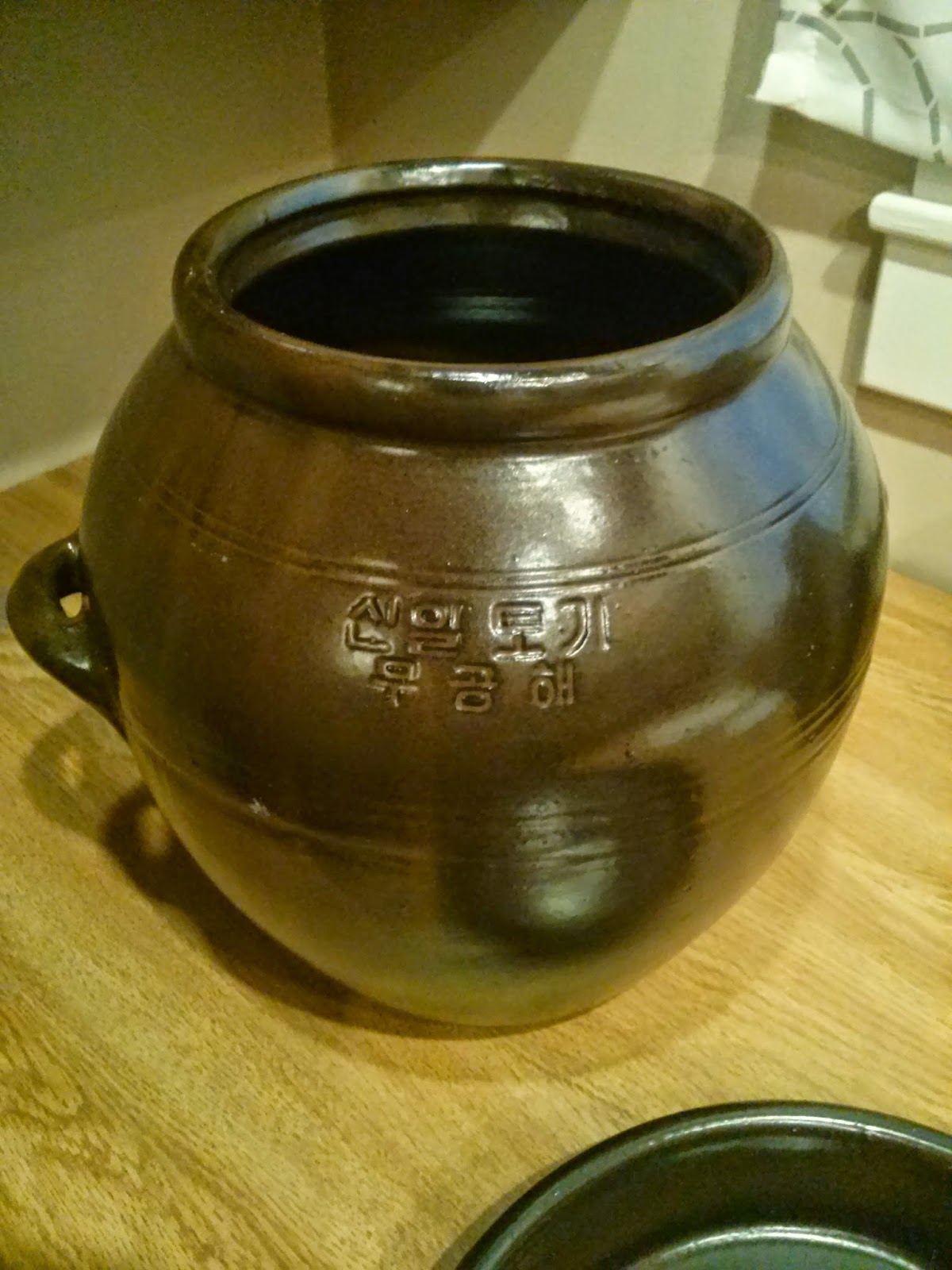부의주 막걸리 (동동주) | Buuiju Makgeolli Pt. 3
Part 1 | Part 2
For the last part I have pictures of the 48 hour mark, 60 hour mark and bottling. I decided to bottle early because we would be out of the apartment and the heat might have ruined the makgeolli if left unattended.
@ 48 hours
After stirring, more bubbles formed and there was an audible fizz.
@ 60 hours.
Pieces of rice and nuruk were starting to sink, and a thin layer of clear makgeolli began to form at the top. Ideally, I would have waited until most of the rice had sunk before bottling, but with this weather...
...I decided to bottle early.
I used a steamer cloth to filter the makgeolli. First, some mixture was ladled into the cloth, which was cut in the shape of a bag. Then, the cloth was twisted and squeezed to separate the liquid from the nuruk and rice solids. I repeated this several times with several ladle-fulls at a time in the bag. If there is too much in the bag at once it doesn't filter well.
Pinch the top, twist, and squeeze.
I kept the bowl in the sink to make cleaning up easier. Also, I placed a few tablespoons of honey in the bottle ahead of time.
If you won't be home to ventilate the bottles, make sure you leave room for the gasses that will build up over time. Even in the fridge homemade makgeolli has live organisms which metabolize and produce gas, which will end up carbonating the beverage. To make room for gas I squeezed the bottle thin. When I got home the next day, it had puffed out to about 95% it's original size. Beware of bottle bombs!
For the last part I have pictures of the 48 hour mark, 60 hour mark and bottling. I decided to bottle early because we would be out of the apartment and the heat might have ruined the makgeolli if left unattended.
At the 48 hour mark there were larger bubbles on the surface of the mixture.
@ 48 hours
After stirring, more bubbles formed and there was an audible fizz.
@ 60 hours.
Pieces of rice and nuruk were starting to sink, and a thin layer of clear makgeolli began to form at the top. Ideally, I would have waited until most of the rice had sunk before bottling, but with this weather...
...I decided to bottle early.
I used a steamer cloth to filter the makgeolli. First, some mixture was ladled into the cloth, which was cut in the shape of a bag. Then, the cloth was twisted and squeezed to separate the liquid from the nuruk and rice solids. I repeated this several times with several ladle-fulls at a time in the bag. If there is too much in the bag at once it doesn't filter well.
Pinch the top, twist, and squeeze.
And the makgeolli goes into the bottle with the help of a funnel.
If you won't be home to ventilate the bottles, make sure you leave room for the gasses that will build up over time. Even in the fridge homemade makgeolli has live organisms which metabolize and produce gas, which will end up carbonating the beverage. To make room for gas I squeezed the bottle thin. When I got home the next day, it had puffed out to about 95% it's original size. Beware of bottle bombs!
And that's it! The makgeolli is ready to drink the day you bottle, but it tastes best after about a week in the refrigerator.














Comments
Post a Comment